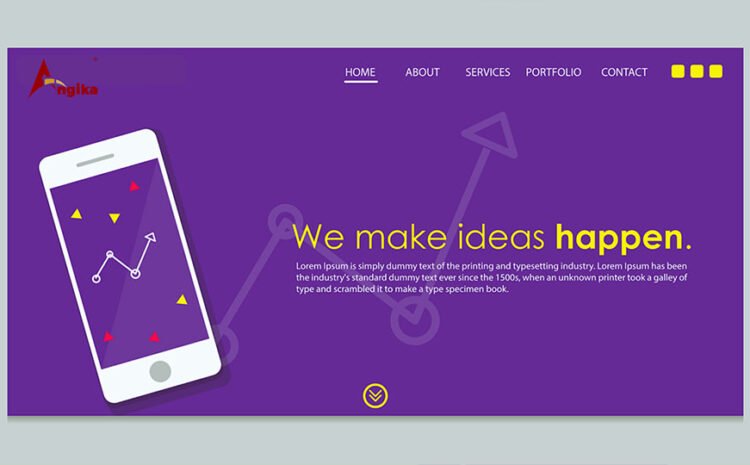The Art of Creating Irresistible Landing Pages: A Comprehensive Guide
It is not easy to create a competitive landing page that converts well. Many crucial factors to consider are based on psychological science and a good feel of what your clients want.
Because landing pages have so many distinct aspects, there is no conventional approach to creating a decent landing page or a one-size-fits-all instruction book. They are as diverse as their visitors. Each of them has a distinct reader, a distinct call to action, a distinct niche, and a distinct product or service to market. Intent, purpose, perspective, niche, audience, industry, angle, testimonial strategy, product, focus, messaging, cost, buy-in, pricing, shipping method, and many other elements vary greatly.
There are, however, some common qualities that you should be aware of. You can develop your own compelling landing page by reviewing them.
1. Headings and Sub-Headings
The headline of the landing page is the first thing visitors will see. As a result, it is critical that it describes exactly what a user will obtain from the page. The message should be compelling enough to pique the visitor’s interest and keep them on your page. Your title should enhance comprehension, attention, and curiosity. It must accomplish the following:
- Attracting the attention of the visitor
- Informing the visitor about your goods or service.
- It should be brief, preferably no less than ten words, and no more than twenty.
Your headline can only say so much to keep it digestible and brief. As a result, you’ll also need to include a supporting headline. This can be a direct continuation of the main headline, following it like a final phrase, or it can be a separate compelling message that supports the original one. This supporting headline or subheadline must be highly convincing.
If your primary headline draws the visitor’s attention to your landing page, the compelling sub-title should persuade them to stay. The convincing subheadline is usually found just beneath the main title and goes into slightly more detail and depth.
2. Unique Selling Point
You must define a point of differentiation through a distinct selling proposition. Explain to visitors to your landing page what distinguishes your business or product from the competition. This should be presented succinctly on your landing page. Break down your offering to its most basic level and describe the exact value for your clients. A good unique selling proposition explains why buyers should care and establish clear expectations for them.
3. Key Advantages You Offering
The benefits of your offer are a more extensive statement that follows directly from the unique selling proposition. You must provide more information about the deal and address any queries your consumers may have, particularly those concerning what your service or product can achieve for them. Include a benefits summary bullet point list for clarity, as well as detailed benefit and feature explanations to supplement your bullet point list. The characteristics of your product or service describe what it does, while the benefits identify the problem you are tackling.
4. Use Relevant and Eye-Catchy Images and Videos
This is the visual depiction of your offer and serves to help visitors comprehend what your offer is or how it appears. Showing rather than telling the context of use has the most impact. Encourage your visitors to put themselves in a situation and empathize with how they are using it. You can accomplish this by using photographs or videos.
If you decide to utilize images, make sure they are large, high-quality, and related to your business or product. It is crucial to have a photograph of the goods on your landing page, especially if you are selling a real product. When advertising a service, the image should demonstrate the usability of the service while also capturing the attention of your visitors.
5. Social Proof
Social proof can be quite convincing. By utilizing social proof, you demonstrate that others have purchased what you are giving. Visitors are more likely to become customers if they discover that others have taken advantage of your offer. You can leverage social proof on your landing page by including a tally of the number of signups, social signals from public networks, awards from respectable organizations, or customer testimonials and reviews.
6. Finale Argument
As your landing page comes to a close, the closing argument is your final opportunity to demonstrate the value of your offer. This, like the reinforcement statement, supports your core value proposition. The closing argument should also include a call to action.
7. C-to-A(Call to Action)
A call to action might be part of a lead generation form or a separate button on a click-through page. Because the call to action is so important to conversions, where you place it and how you design it are vital factors. The call to action should be enticing, thrilling, and convincing. Make it stand out by using contrasting colors. It can be found directly beneath an image or beneath the testimonial area.
Conclusion
A landing page is where people buy, customers click, and you earn money. Is the location where your efforts will bear fruit. The elements listed above are required for creating an effective landing page. You can utilize these elements to construct a compelling and high-converting landing page. Once completed, it is advised that you continue to improve. To achieve the greatest results, conduct some testing and make changes to your landing page.
Are you ready to get started with creating a landing page? Check out Angika Technologies, our specialists have years of experience creating effective Landing Pages, saving numerous organizations countless hours of time-consuming design and coding throughout the years.











